Scientific classification
Kingdom:
Phylum:
Mollusca
Class:
Gastropoda
Order:
Notaspidea
Family:
Aplysiidae
Genus:
Aplysia
Species:
A. Dactylomela
Binomial name (link Wikipedia)




Spotted Sea Hare
Lièvre de Mer
Seehase
Vaca-Conejo de Mar
Zeehaas
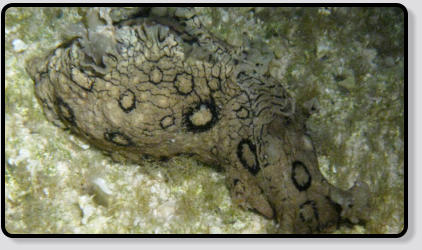
Description
Aplysia dactylomela, common name the "spotted sea hare", is a species of large sea slug, a marine opisthobranch gastropod mollusc in the
family Aplysiidae, the sea hares.
This species of sea hare is cosmopolitan, being found in almost all tropical and temperate seas, including recently the Mediterranean Sea.
The colour of the spotted sea hare is very variable, from pale gray to green, to dark brown. There are almost always large black rings on the
mantle. The maximum recorded length is 410 mm.
Aplysia dactylomela is commonly found in shallow waters, tide pools and rocky and sandy substrates, they also will be found feeding in beds of
sea grass. During the day they will mostly hide under large rocks and in crevices. They usually stay in relatively shallow water, but they have
been found as deep as 40 m.
Minimum recorded depth is 0 m. Maximum recorded depth is 3 m

Animalia
Scientific classification
Kingdom:
Phylum:
Mollusca
Class:
Gastropoda
Order:
Notaspidea
Family:
Aplysiidae
Genus:
Aplysia
Species:
A. Fasciata
Binomial name (link Wikipedia)




Mottled Sea Hare
Lièvre de Mer
Schwarzer Seehase
Vaca-Conejo de Mar
Zwarte Zeehaas
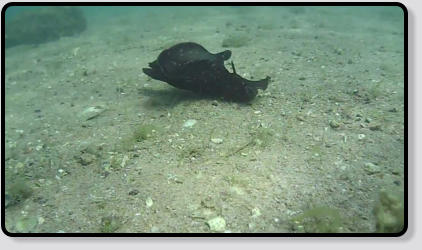
Description
Aplysia fasciata, common name the "mottled sea hare", or the "sooty sea hare", is an Atlantic species of sea hare or sea slug, a marine
opisthobranch gastropod mollusk in the family Aplysiidae.
The length is up to 40 cm. The color is often black or dark brown with an orange or red line.
This sea hare occurs in the Western Atlantic from New Jersey to Brazil, and in the Eastern Atlantic including the Mediterranean and the West
African coast. It is a rare visitor to the seas off the southern British Isles (the related A. punctata is regular along most British coasts, as well as
the northeast Atlantic).
Some consider the species Aplysia brasiliana, found in the Atlantic coast of the Americas, to be a synonym of Aplysia fasciata with just a different
regional colour pattern.
Animalia
Scientific classification
Kingdom:
Phylum:
Mollusca
Class:
Gastropoda
Order:
Notaspidea
Family:
Pleurobranchidae
Genus:
Berthella
Species:
B. Ocellata
Berthella Ocellata
Binomial name




Berthella Ocellata
Berthella Ocellata
Berthella Ocellata
Berthella Ocellata
Berthella Ocellata
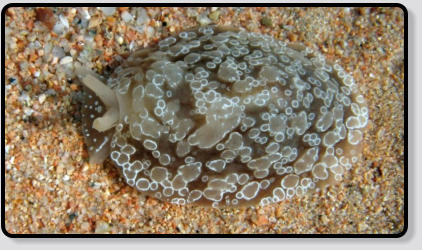
Description
No further information available on Wikipedia.
Animalia
Scientific classification
Kingdom:
Phylum:
Mollusca
Class:
Gastropoda
Order:
Notaspidea
Family:
Pleurobranchidae
Genus:
Berthellina
Species:
B. Edwardsii
Berthellina Edwardsii
Binomial name




Berthellina Edwardsii
Berthellina Edwardsii
Berthellina Edwardsii
Berthellina Edwardsii
Berthellina Edwardsii
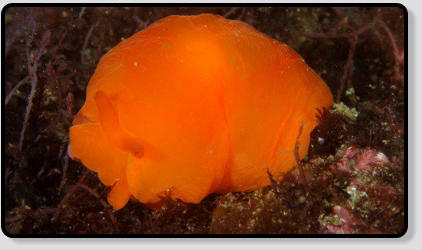
No further information available on Wikipedia.
Description
Animalia
Scientific classification
Kingdom:
Phylum:
Mollusca
Class:
Gastropoda
Order:
Notaspidea
Family:
Chromodorididae
Genus:
Chromodoris
Species:
C. Sp.
Chromodoris Sp.
Binomial name




Chromodoris Sp
Chromodoris Sp
Chromodoris Sp
Chromodoris Sp
Chromodoris Sp
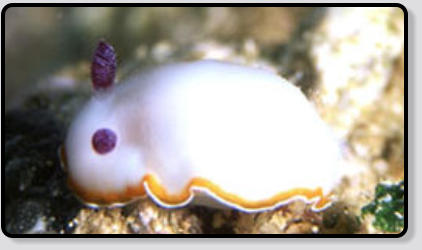
No further information available on Wikipedia.
Description
Animalia
Scientific classification
Kingdom:
Phylum:
Mollusca
Class:
Gastropoda
Order:
Notaspidea
Family:
Flabellinidae
Genus:
Flabellina
Species:
F. affinis
Binomial name (link Wikipedia)




Flabellina Affinis
Flabellina Affinis
Flabellina Affinis
Flabellina Affinis
Flabellina Affinis
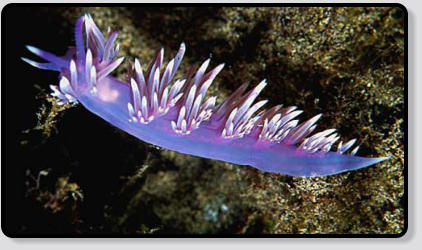
The species can grow to a length of 50 mm. It feeds primarily on species of Eudendrium, a very common hydroid genus in the Mediterranean
Sea.
Flabellina affinis is often confused with Flabellina ischitana, but can be distinguished as follows:
Flabellina affinis: the outer part of the digestive gland in each ceras is not visible as the area beneath the subapical white ring is opaque violet in
colour. Flabellina ischitana: the ceratal surface has no purple-violet colouration and is translucent.
This species is found in depths to 50 m in European waters in the Atlantic Ocean from Portugal to Ghana and the Canaries and is widespread in
the Mediterranean Sea.
Description
Animalia





Categories: Seaslug






Harry van Goor 2016
source: Wikipedia, the free encyclopedia


Scientific classification
Kingdom:
Phylum:
Mollusca
Class:
Gastropoda
Order:
Notaspidea
Family:
Chromodorididae
Genus:
Felimare
Species:
F. Picta
Hypselodoris Picta Webbi
Binomial name




Hypselodoris Picta Webbi
Hypselodoris Picta Webbi
Gelbviolette Sternschneke
Hypselodoris Picta Webbi
Hypselodoris Picta Webbi
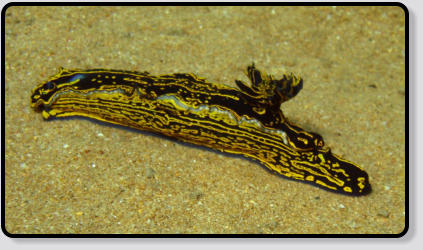
This nudibranch grows to about 20 cm (8 inches) long and feeds on various sponges.
Felimare picta lives in rocky seabeds throughout the Mediterranean Sea (Greece), European waters (Spain, Portugal), the Eastern North Atlantic
Ocean (Azores) and the Gulf of Mexico
Minimum recorded depth is 0 m.[5] Maximum recorded depth is 55 m.
No further information available on Wikipedia.
Description
Animalia


Scientific classification
Kingdom:
Phylum:
Mollusca
Class:
Gastropoda
Order:
Notaspidea
Family:
Discodorididae
Genus:
Peltodoris
Species:
P. Atromaculata
Binomial name (link Wikipedia)




Dotted Seaslug
Peltodoris Astromaculata
Leopardenschnecke
Vaquita
Luipaard Slak
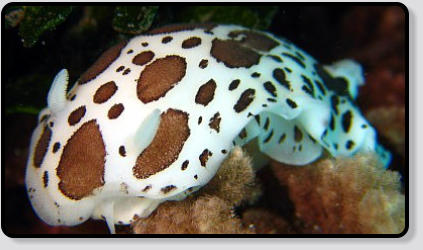
Peltodoris atromaculata is a species of sea slug, a dorid nudibranch, a marine gastropod mollusk in the family Discodorididae.
No further information available on Wikipedia.
Description
Animalia


Scientific classification
Kingdom:
Phylum:
Mollusca
Class:
Gastropoda
Order:
Notaspidea
Family:
Discodorididae
Genus:
Platydoris
Species:
P. Argo
Binomial name (link Wikipedia)




Platydoris Argo
Platydoris Argo
Ledernaktschnecke
Platydoris Argo
Platydoris Argo
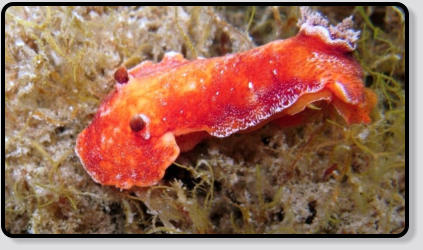
Platydoris argo is a species of sea slug, a dorid nudibranch, shell-less marine opisthobranch gastropod mollusks in the family Discodorididae.
No further information available on Wikipedia.
Description
Animalia


Scientific classification
Kingdom:
Phylum:
Mollusca
Class:
Gastropoda
Order:
Notaspidea
Family:
Polyceridae
Genus:
Plocamopherus
Species:
P. Maderae
Binomial name (link Wikipedia)




Plocamopherus Maderae
Plocamopherus Maderae
Madeira-Nachtschnecke
Plocamopherus Maderae
Plocamopherus Maderae
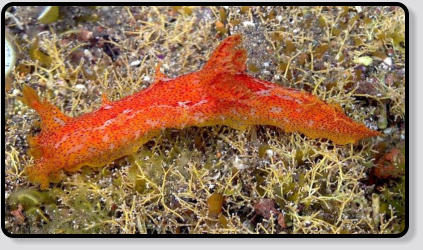
Plocamopherus maderae is a species of sea slug, a nudibranch, a shell-less marine gastropod mollusk in the family Polyceridae.
This nudibranch is orange or yellow-orange in colour, with numerous small dark brown spots and fewer, larger, poorly-defined, orange spots and
patches. The mantle edge has three pairs of branched papillae, one behind the branchial plume, one in front and one mid-way along the back.
These are marked with white pigment and there is a variable amount of white pigment along the mantle edge and behind the gills. The papillae
behind the branchial plume bear rounded bioluminescent organs. The tail is long, flattened and has a dorsal crest. It is muscular and can be used
for swimming. The gills are large, sparsely branched and held erect. The rhinophores have lamellate tips and a tapering stalk and are similar in
colour to the body. Maximum size is about 50 mm. This nudibranch is normally nocturnal, hiding beneath boulders in shallow water during
daytime.
This species was described from Madeira. It has subsequently been reported from the Canary Islands and the Cape Verde Islands.
Description
Animalia

